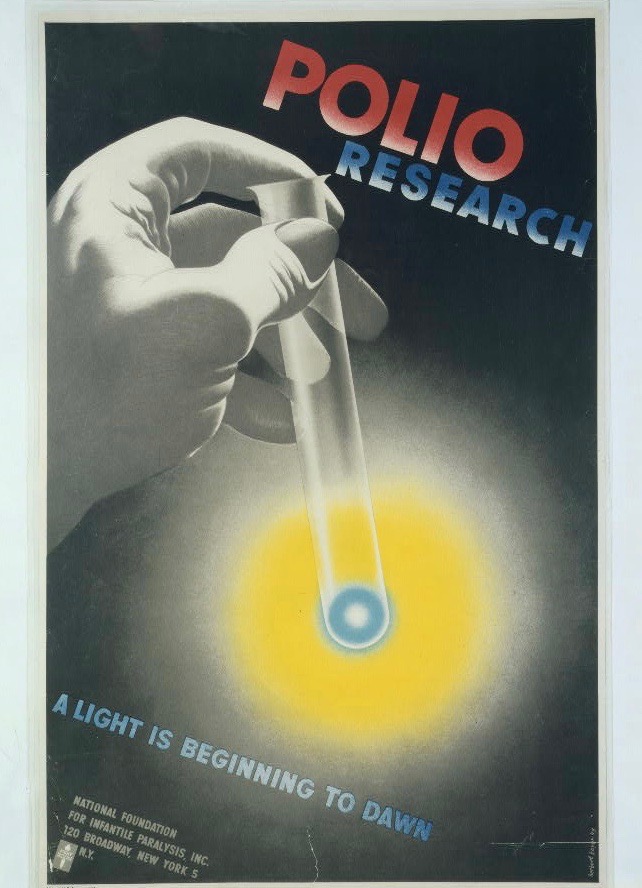
A 1949 poster from the National Foundation for Infantile Paralysis.
Wednesday, January 6
On a day featuring two amazing progressive Senate wins in Georgia…and a mind-blowing violent right-wing invasion of the U.S. Capitol…the COVID-19 crisis is all but forgotten.
Yet coronavirus cases continue to mount. Much of the pandemic news coverage has focused on the question of whether the vaccine rollout has been too slow. “The effort to vaccinate millions of New Yorkers against the virus has been off to a sluggish start, alarming city and health officials at a time when infection numbers are surging and a more contagious variant has been detected in the state,” says The New York Times.
But my reading about polio makes me wonder: Has the COVID-19 vaccine rollout been too fast?
Consider this: In 1954, the Salk polio vaccine was new. During that year 600,000 kids were injected with the vaccine as a test. Thousands more were given a placebo rather than the actual vaccine, as a way of checking the vaccine’s effectiveness. Over one million kids took part in the testing.
Then, a Vaccine Evaluation Center at the University of Michigan studied the results for around a year before the vaccine was made available to the general public.
Today, in the case of the COVID-19 vaccine, only about 60,000 people were tested by Moderna and Pfizer before the public began getting the vaccine.
That’s about one-tenth the number tested for the Salk vaccine. Overall, the process has been hugely accelerated. It’s “Operation Warp Speed,” don’t you know.
So what happened? Are we so desperate to get this COVID inoculation that testing has been downplayed?
Back in 1954, even with the slower pace of polio vaccine deployment, there were problems. “It turned out that the amazing success of the Salk trials had led the public to demand an immediate release of the vaccine,” writes medical historian David Oshinsky. “The government had quickly relented, allowing five drug companies to ramp up production without proper oversight. The worst offender, Cutter Laboratories of Berkley, California, released a vaccine so contaminated with live poliovirus that 164 children were permanently paralyzed and 10 died.”
Medical science has undoubtedly come a long way in the ensuing decades. Oshinsky says that no safety corners have been cut today, but he admits that there has been no peer review of Pfizer and Moderna’s claims, as is usual. We can only hope that this time, pressure from the public and politicians has not been so intense that standards have again been relaxed.
Entertainment: NPR coverage of the wild events in Washington, D.C., followed by episodes of Last Tango in Halifax on Netflix.
Dinner: lentil soup with hot dogs and a green salad.

